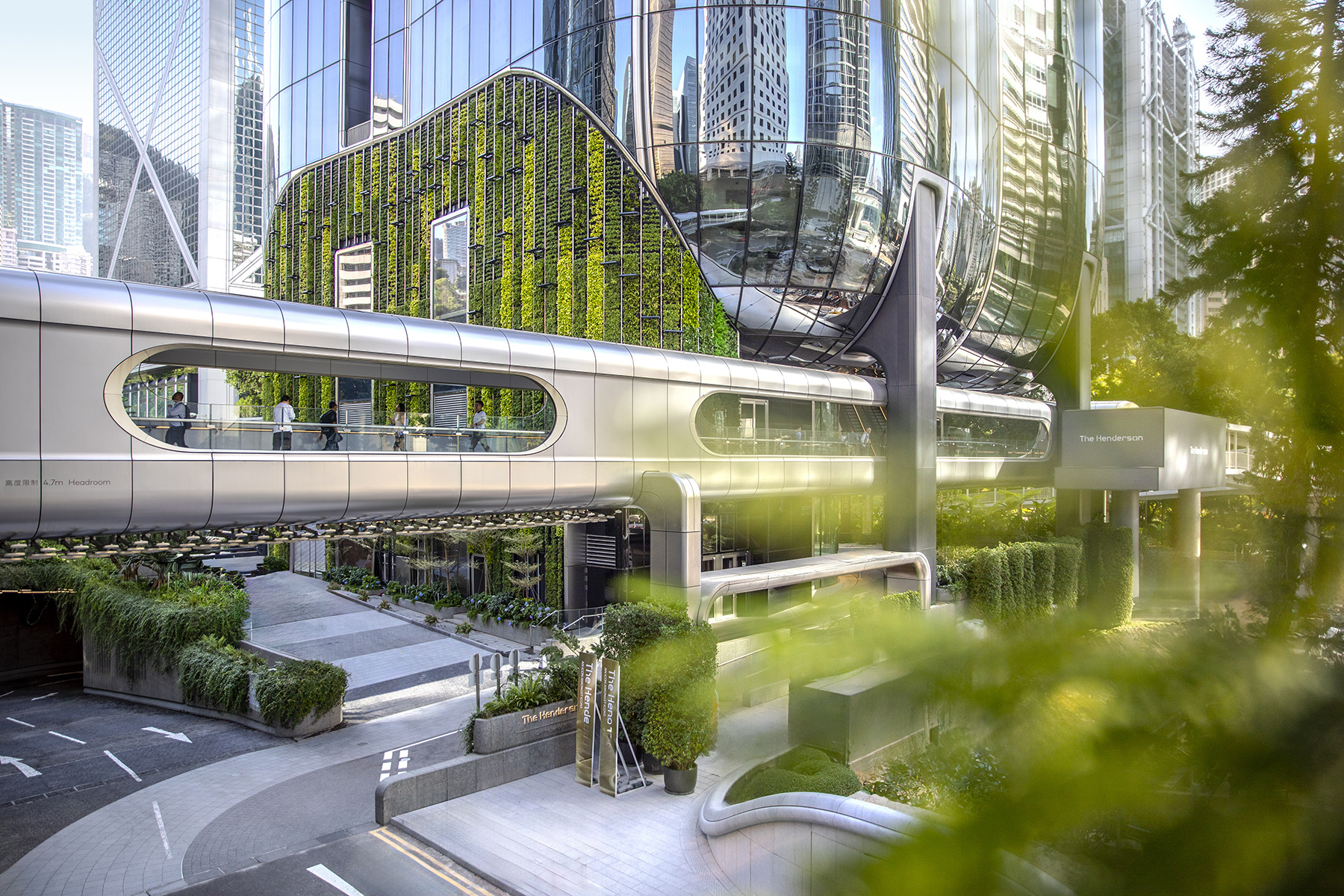Architectural landmarks often cluster together. In Tokyo, the iconic Omotesando is a well-known stretch where global “starchitects” built flagship luxury retail spaces in the 2000s. Hong Kong has a lesser-known but equally powerful architectural agglomeration along Queensway—though historically more corporate and less publicly engaging. Beginning in the 1980s, this corridor became home to a series of landmark buildings by some of the world’s most prominent architects: Norman Foster’s HSBC Headquarters, I.M. Pei’s Bank of China Tower, Paul Rudolph’s Lippo Centre, and the nearby Murray Building by Ron Phillips—now revitalized as a hotel by Foster + Partners. The area is further enriched later on by Heatherwick Studio’s renovation of Pacific Place and Tod Williams Billie Tsien Architects’ Asia Society Hong Kong Center.
![]()
![]()
![]()
![]()
![]()
For decades, Queensway remained largely defined by these monumental contributions. But recently, a new presence has emerged: The Henderson by Zaha Hadid Architects. Sculptural, luminous, and technologically daring, the tower not only refreshes the Hong Kong skyline—it redefines how commercial architecture can engage with the city. Where Norman Foster once reimagined the ground plane with the open base of the HSBC building, The Henderson offers a contemporary response: elevating the public realm both figuratively and literally through a raised lobby and a public bridge that weaves into the city’s pedestrian network.

